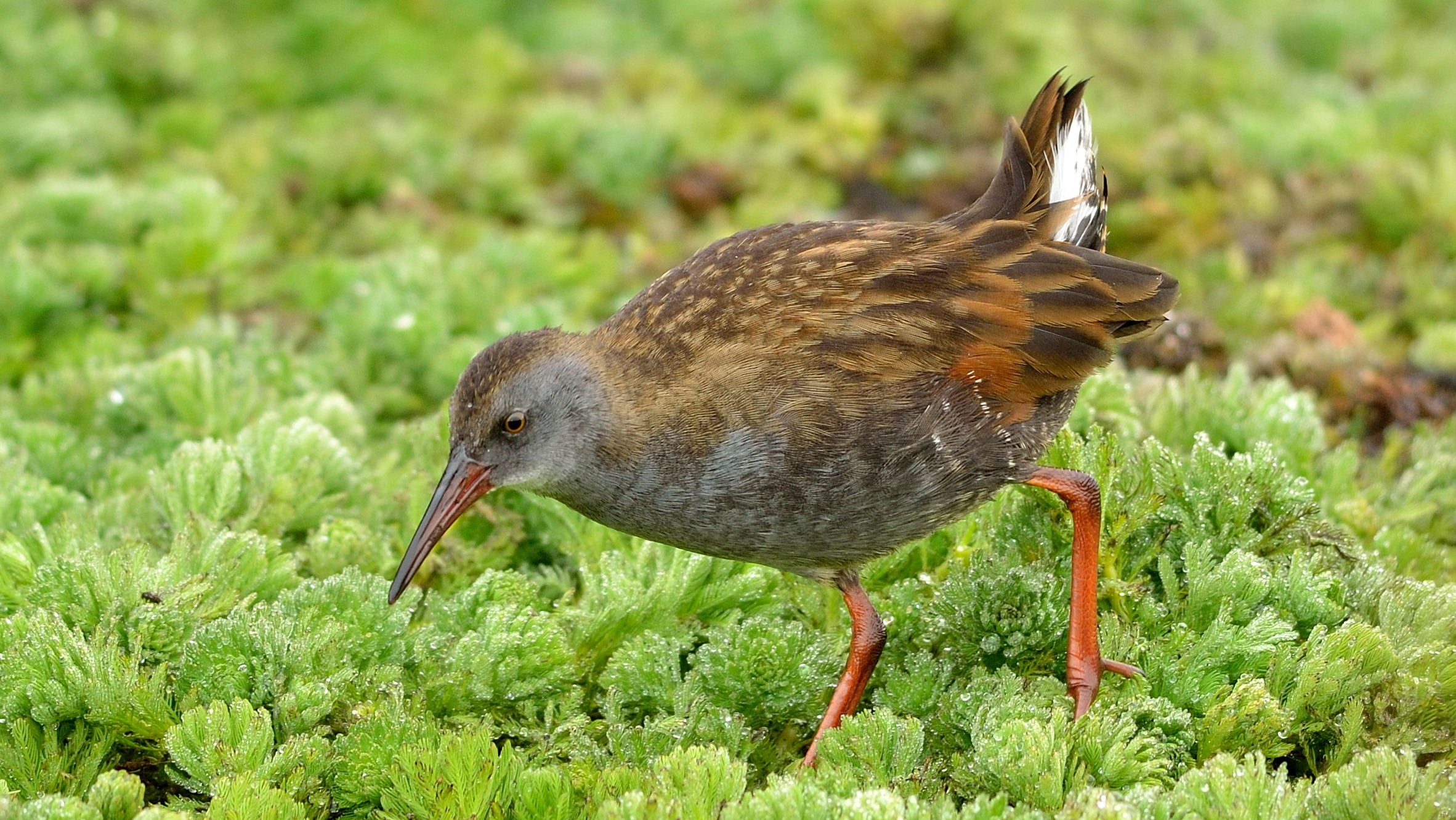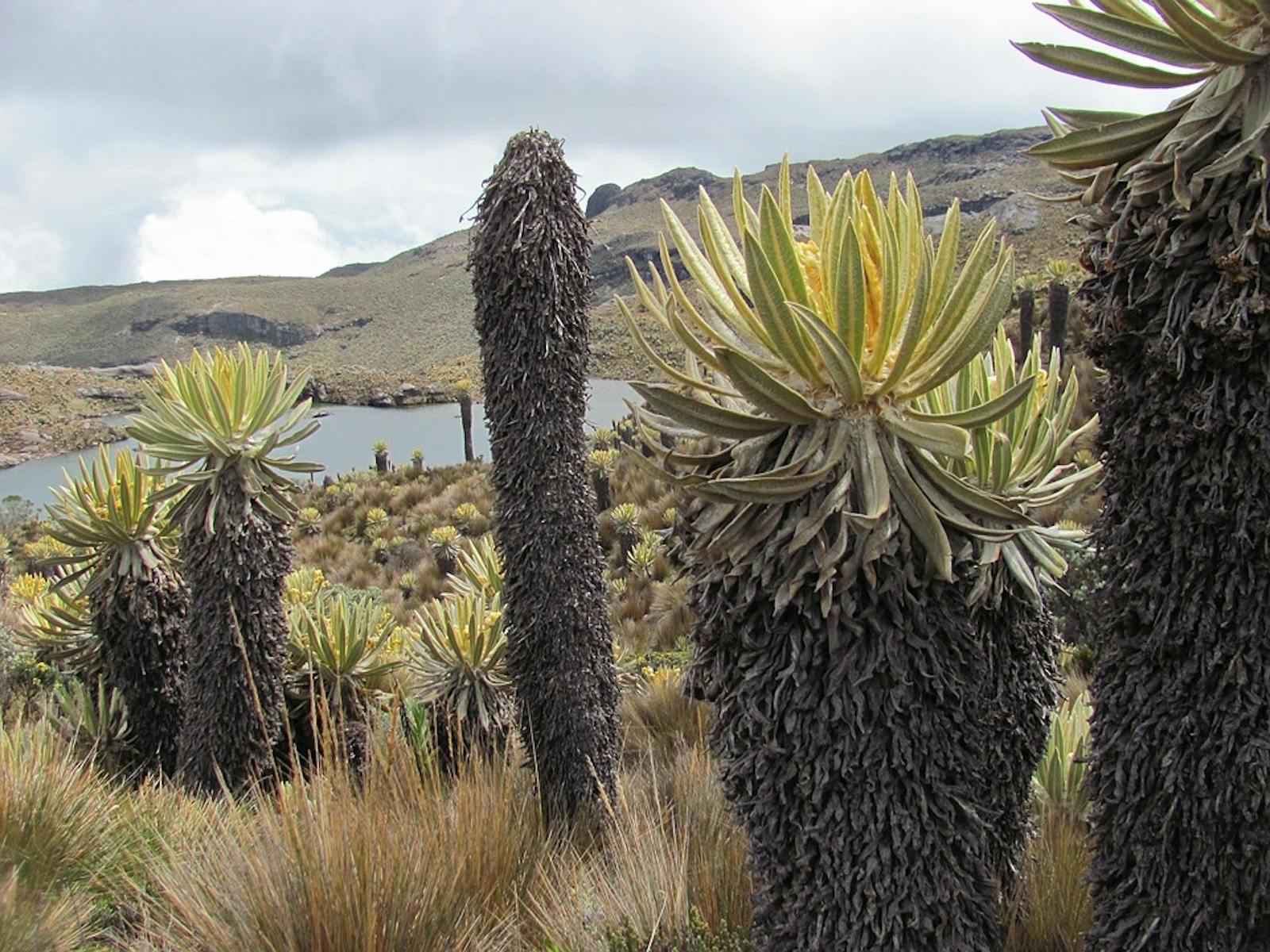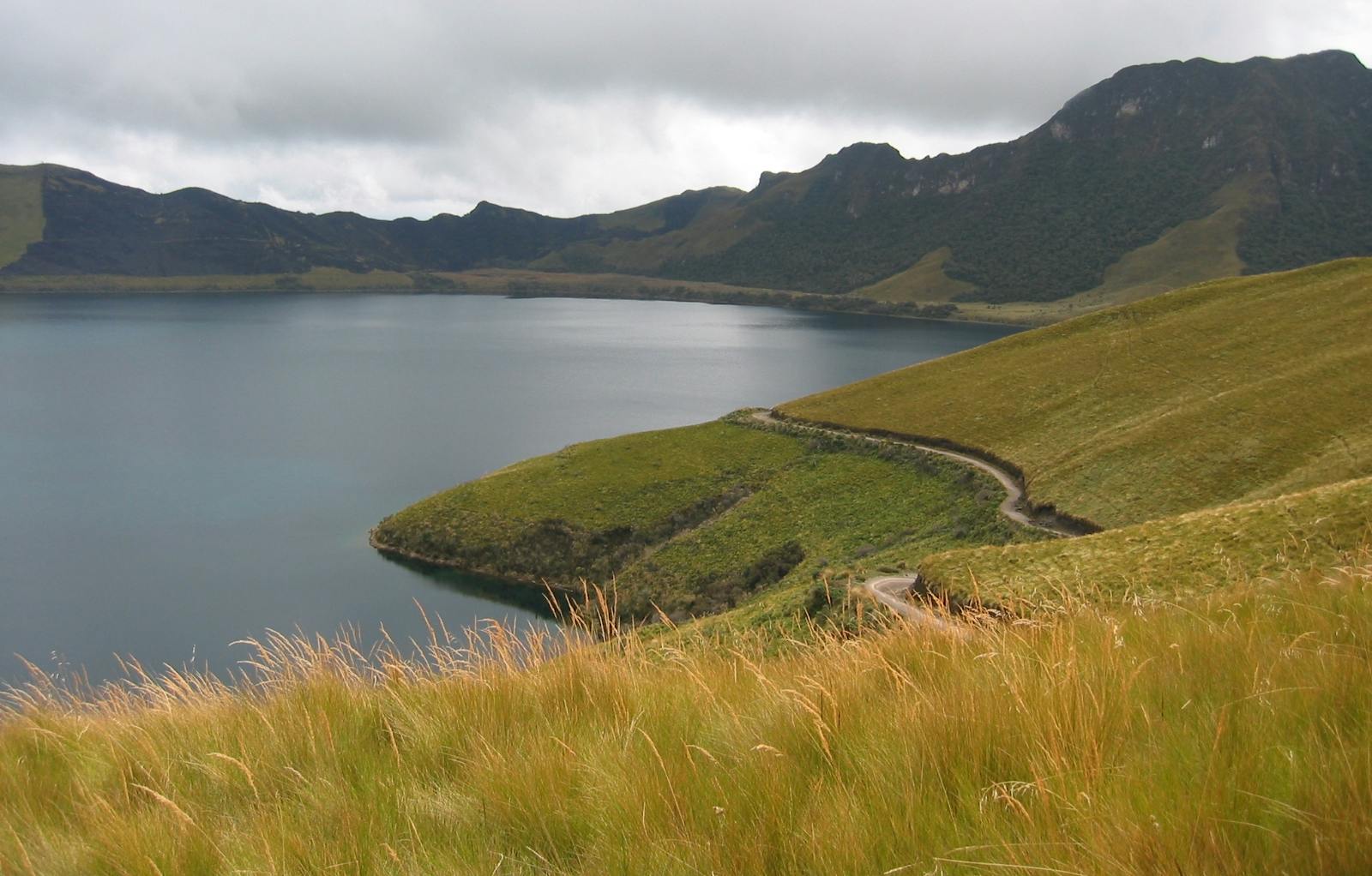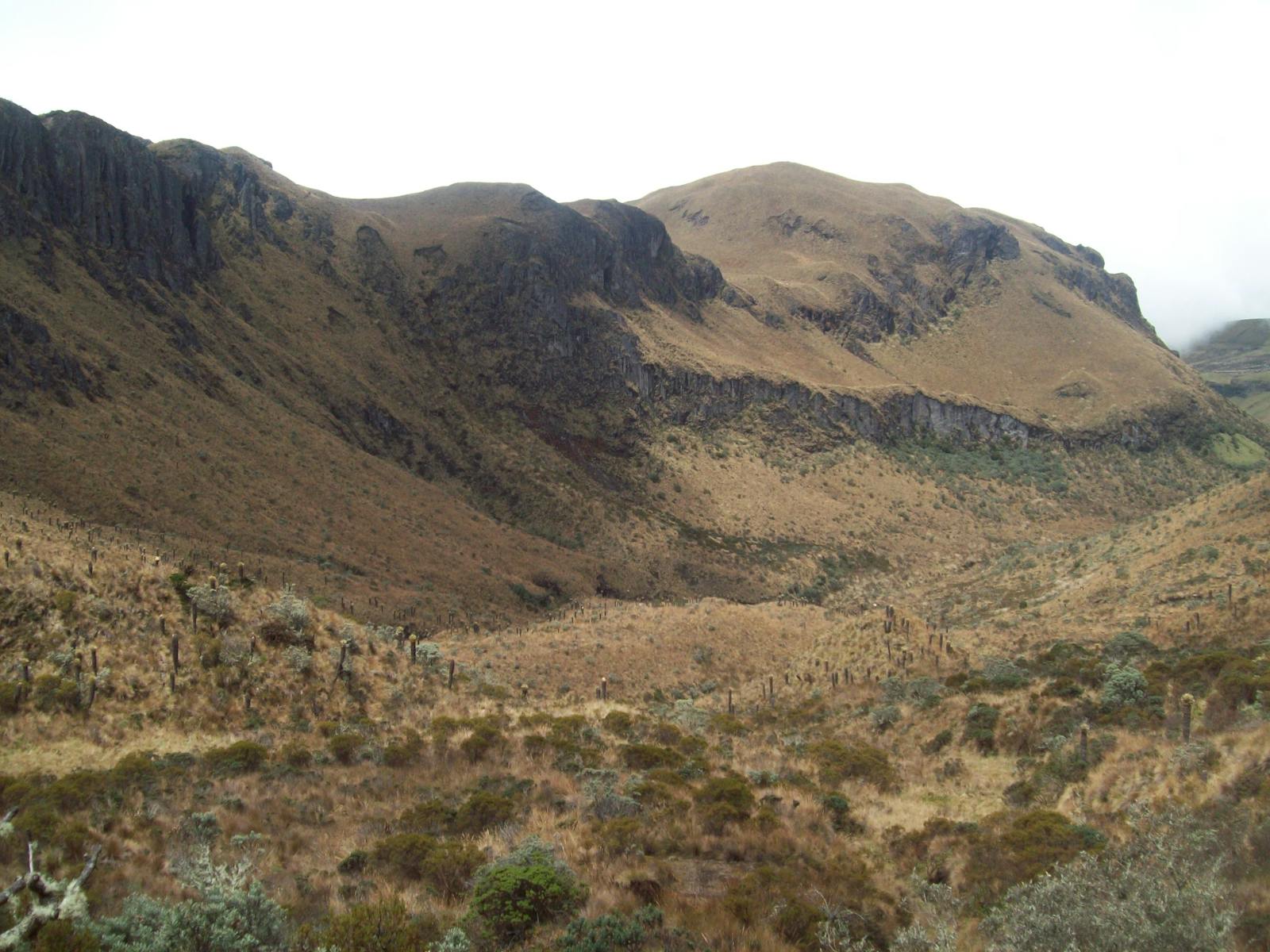Northern Andean Páramo
The ecoregion’s land area is provided in units of 1,000 hectares. The conservation target is the Global Safety Net (GSN1) area for the given ecoregion. The protection level indicates the percentage of the GSN goal that is currently protected on a scale of 0-10. N/A means data is not available at this time.
Bioregion: Andean Mountain Forests & Valleys (NT11)
Realm: Southern America
Ecoregion Size (1000 ha):
3,001
Ecoregion ID:
593
Conservation Target:
53%
Protection Level:
8
States: Ecuador, Colombia, Venezuela
Endemic to the mountain ranges within this ecosystem, the western mountain coati is a small carnivore species adapted to living in high Andean cloud forests. They forage in small groups among the leaf litter and lower branches looking for insects, lizards, eggs and just about anything else they can find.
Their long snouts are ideal for poking and prodding for worms and larvae and a keen sense of smell keeps them on the hunt. Coati have ringed tails, and when foraging in groups can be seen from a distance with their tails all pointing straight up in the air as they walk, bounce, dig and prod with their noses through the paramo.

The flagship species of the Northern Andean Páramo ecoregion is the Western mountain coati. Image credit: Creative Commons
The Northern Andean Páramo ecoregion includes the high altitude wet grasslands that are above the tree line and below the snow line within the equatorial Andes. The páramo contains among the highest biodiversity of high altitude open vegetation types in the world. Special adaptations of páramo vegetation have led to its ability to survive the extreme cold, high winds, intense ultra-violet rays, frost, high-elevation, abrupt climatic change, and even fire.
These areas have also been heavily influenced by human activities for generations, and their biological tolerance are being pushed to the limit by burning, grazing, and farming.
The ecoregion’s high elevation area receives more than 2,000 mm/year of precipitation and has humidity averaging 80% because it is in the intertropical convergence zone (ITZ). The ITZ is influenced by low-pressure zones created close to the equator, producing large amounts of precipitation and strong winds. This stunts the growth of trees and gives way to a tropical alpine grasslands environment. Páramos have a range in temperature from below freezing to as high as 30°C, resulting in freeze and thaw cycles.
Páramo is not forest, but grassland in the upper most elevations, which have distinct vegetation of tussock grasses, coriaceous shrubs, with rosette, and cushion plants. The shrubs found in páramo are microphyllous shrubs, which are especially adapted to ultraviolet rays and transpiration at this elevation.
Páramo has the richest high-mountain flora in the world and is high in endemism. It supports both the endangered spectacled bear and Andean mountain tapir. Other charismatic mammals found here are the Andean fox, mountain coati, long-tailed weasel, and guinea pig.
Amongst the birds, the endangered Andean condor is mistakenly hunted by fear of cattle ranchers who believe that it kills their cattle. The ecoregion is also designated as an Endemic Bird Area (EBA) with many birds that are restricted to páramo habitat, although few are confined strictly to this ecoregion. Among the near-endemics are the black-breasted puffleg and the rufous-fronted parakeet. The ecoregion also has a diversity of amphibians, many of which are endangered, such as painted frogs (Atelopus spp.), poison dart frog (Colostethus sp.), marsupial frogs (Gastrotheca spp.), and rocket frogs (Hyloxalus spp.); as well as reptiles such as lizards.

Endangered bogota rail. Image credit: Neil Orlando Diaz Martinez, Creative Commons
In Ecuador, despite large national parks like Cotacachi-Cayapas and Cayambe-Coca that cover part of the ecoregion, the few park guards that exist are not numerous enough to control the hunting and burning activities that are encroaching the natural habitats. In Colombia, paramos are also offered some protection but enforcement and staffing are a constant challenge.
Other protected areas include Chingaza National Natural Park, Sumapaz Páramo National Park, Sierra Nevada del Cocuy Chita o Guican National Natural Park, Lake Iguaque Flora and Fauna Sanctuary, Los Nevados National Natural Park, and Las Hermosas National Natural Park.
Due to the cold, inhospitable environment the remote páramo areas remain relatively intact with some areas far from human contact. It is the harsh environment, along with geographical isolation, which has helped conserve the large areas of intact Andean Páramo. Loss of forest at lower altitudes is affecting wildlife that utilize páramo as part of their life cycle through altitudinal migrations.
Today one of the main threats to páramo is the construction of roads that lead to these previously inaccessible areas. Another threat is the expansion of cattle ranchers and farmers, which utilize the páramos resources and burn native vegetation to improve forage quality for domestic animals.
The priority conservation actions for the next decade are to: 1) increase conservation and capacity of the established protected areas; 2) reduce burning of natural vegetation to promote “pasture” for grazing; and 3) work with local government to limit road development into and road usage in this sensitive ecoregion.
Citations
1. Klein, B. 2018. Western South America: Central Ecuador into Colombia https://www.worldwildlife.org/ecoregions/nt1006 Accessed October 16, 2018.
2. González-Maya, J.F., Reid, F. & Helgen, K. 2016. Nasuella olivacea. The IUCN Red List of Threatened Species 2016: e.T72261737A45201571. http://dx.doi.org/10.2305/IUCN.UK.2016-1.RLTS.T72261737A45201571.en. Downloaded on 16 October 2018.
3. Complejo Ecoregional de los Andes del Norte (CEAN). Experts and ecoregional priority setting workshop. Bogota, Colombia, 24-26, July, 2000.


%20in%20the%20Pa%CC%81ramo%20de%20Guerrero%20of%20Colombia-Eco%20593-CC-Friedrich%20Kircher-2008.JPG?auto=compress%2Cformat&w=1600)



